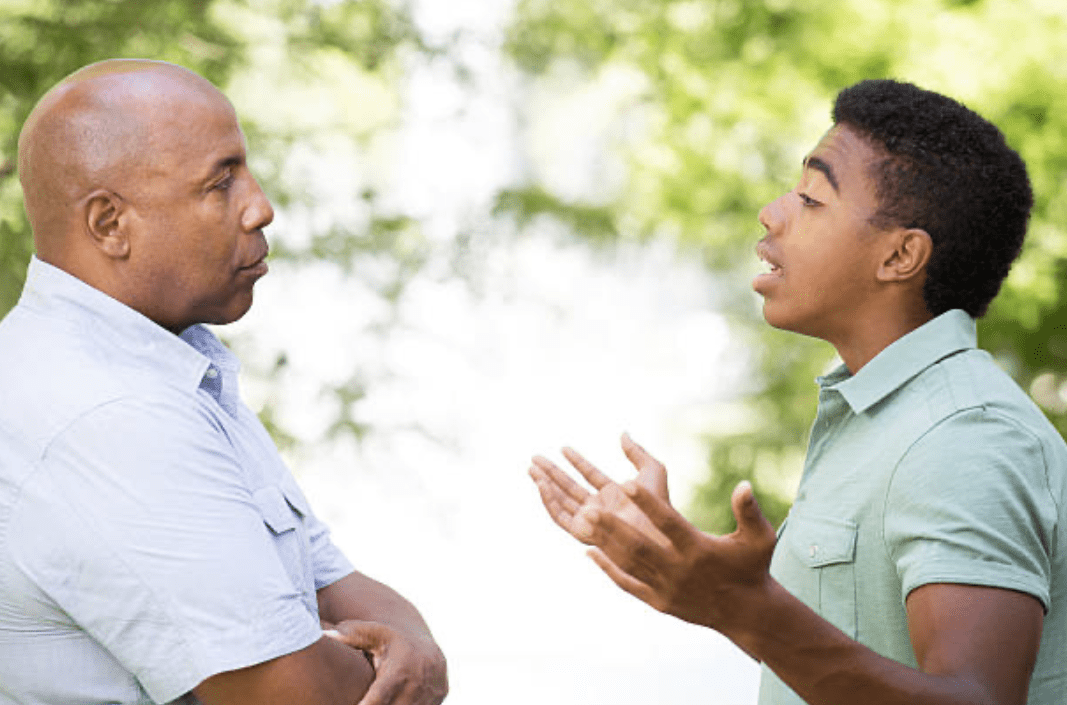How to Revitalize Connection in a “Roommate” Marriage: Pt. 2 Physical Connection
This article is based on scientific evidence and clinical experience, written by a licensed professional and fact-checked by experts.
Posted: April 16, 2024
Estimated reading time: 8 minutes
In This article

Physical touch is a crucial component in a healthy relationship. In this article, I offer very practical tools you and your partner can use to strengthen the non-erotic touch in your relationship.
It is important to note the focus of this article is cultivating touch that is comforting and fosters closeness – but is not overtly seeking to cause sexual arousal. Sexual intimacy and sexual touch are very important and is addressed in the third article of this series on revitalizing connection in your marriage. [If you missed the first article on cultivating emotional intimacy, you can find it here.]
Safe, comforting touch can dwindle in a marriage for a myriad of reasons: work, kids, travel, conflict – to name just a few. If you have found yourself in a marriage starving for physical closeness, you are not alone.
“Roommate marriages” have become an increasingly common phenomenon in this age of busyness. Couples regularly come into sessions describing touch-starved relationships. Spouses frequently describe their relationships with a sense of despair and hopelessness wondering if a sense of intimacy can be regained.
This article will provide practical ways to help you bring touch back – I’ve even included a few reading recommendations, and a master list of ways you can touch your partner to help get you started.
The Case for Touch
A simple Google search about the benefits of physical touch will yield thousands of results and articles. From the moment we are born, we are created to experience loving and safe touch. In hospitals, parents are now consistently encouraged to engage in skin-to-skin contact with their newborns to help regulate the baby’s nervous system and temperature.
When it comes to romantic relationships, touch can communicate safety, comfort, calm, and care. Positive, non-erotic touch from your partner can mitigate stress and be protective against pain (Ditzen et al., 2007). Debrot et al. (2013) found couples who touch more often demonstrate improved psychological well-being over time. There are hundreds of studies and books written on the importance of physical intimacy in relationships.
If you would like to know more about the benefits of non-erotic touch, I have included a few articles and books at the end of this article you can explore further.
It is also important to note that a lack of touch as well as aggressive, hurtful touch can have devastating consequences over the lifespan. If you have experienced touch that felt unsafe or if you struggle to receive touch from your partner, you are not alone and there is hope for healing. I highly recommend seeking a wise, safe counselor to walk with you through this journey.
How Did We Get Here?
It is important to take the time to analyze your relationship and notice how non-erotic touch has shifted over time. If you start making changes without taking the time to understand why touch has deteriorated, you may be setting yourselves up for failure. Context makes relational behaviors make sense.
There is a reason touch is dwindling in your relationship. Some factors to consider: busyness, trauma, relational conflict, lack of emotional connection, family background, hormones, life stage, grief, difficulties in sex, and so on.
I have provided a list of questions below to help you and your partner discover the “whys” behind the lack of physical intimacy in your relationship. A gentle reminder: this is not the time for blaming – I encourage you both to tread softly and with care. Approach this analysis with curiosity and compassion for you and your spouse.
Questions to process with your partner:
– What was touch like at the beginning of our relationship? How did it evolve over time?
– What is the experience of touch like for me? (Note: this may sound like an odd question. However, we want to be curious about how touch is received and how it is experienced.)
– What are my favorite kinds of touches?
– Which kinds of touch leave me feeling safe?
– Which kinds of touch leave me feeling uncomfortable and/or unsafe?
– What is the most comforting touch I can imagine?
– How do I feel about bringing more touch into the relationship? (Note: for some, more touch will bring feelings of excitement, for others there may be fear, anxiety, anger or a combination of all of these feelings.)
The “No Pressure” Mindset
Before we jump into the practical ways to incorporate touch, we want to make sure we have the right mindset. One of the the struggles with physical intimacy is the automatic link to sexual intimacy. Many times, when couples run into difficulties in their sex lives, physical touch can be tossed out the window as well.
As we bring physical touch back into the relationship, we want to be clear about the importance of non-demand touch. Non-demand touch meaning: physical touch for the sake of comfort and pleasure without the expectation that the touch lead to sex.
If there is anxiety or hurt associated with your sexual intimacy, I highly encourage you both to consider pursuing sex therapy with a skilled counselor. I want you to feel safe, happy, and excited when your partner comes up behind you and hugs you – I do not want you to feel the need to shut down the affection because you are afraid your partner wants to whisk you off to the bedroom.
Many couples find it helpful to take a temporary break from sexual intimacy for a pre-determined amount of time during this season. This can help by freeing couples of the pressure and anxiety of wondering if their partner’s physical advances are actually a bid for sex.
Throughout this process we want to nurture and reinforce the link between physical touch and good feelings. When we have had issues in the area of sex, there can be negative feelings associated with physical touch as well because of the anxiety surrounding sex.
Now that we have processed some of the reasons for difficulty in the area of physical intimacy, and have established a mindset conducive to building safety and trust, let’s get practical. Below, I offer three practical ways to incorporate more non-erotic touch into your relationship – culminating in a master list of ways you can touch your partner this week.
How Do We Actually Do This?
Get Away
We’ve all been there. We get home from work, get food on the table, spend time with the kids, get the kids to bed, check our phones…. And then, somehow, it is bedtime. We wake up the next day and do it again. Routines are important and necessary, but can also keep us from connecting in meaningful ways with our partners.
Sometimes the best way to introduce something new is to throw the normal routine to the wind. Do something different with your partner – always looking for opportunities to incorporate touch:
- Go on a date
- Spend the night in a hotel
- Sign up for a marriage retreat
- Attend a conference together
- Enjoy a walk while holding hands
- Take ballroom dancing classes
Build Habits
Yes, I know I just said to ditch the normal routine. However, another practical tip to foster more physical touch is to make non-erotic touch one of your normal daily routines. Create a habit or a ritual that fosters more physical touch throughout the day. Allow these times to be precious to you.
Possibilities:
- A kiss before leaving for the day and upon returning.
- A hug good morning, and a hug good night.
- Spend the time watching a show close together, have your partner lean against you, etc.
Pro Tip: Experiment with the length of these “routine” touches. Instead of just a quick peck before work or a brief hug before bed, linger. Hold each other for a few breaths. Focus your mind on what you are feeling – the sensation of your partner’s arms around you, the feeling of their lips against yours. Notice how your body naturally relaxes after 10-15 seconds in a comforting hug with your partner.
Playful Experimenting
There’s nothing better than a good experiment. Curiosity is our best friend when it comes to re-integrating touch. Set aside some time to brainstorm ways you can try to incorporate touch in new or different ways together.
The beautiful thing about experiments is you win whether it is successful or not, because we are primarily attempting to gather information. If you try something, and it goes well – great, you have learned a potential strategy to increase our physical connection. If you try something, and it goes horribly – great, you have an experience you can analyze and explore together in order to understand what went wrong.
Continual Communication
When experimenting, prioritize feelings of safety and comfort. Again, we are not pursuing arousal right now, we are simply trying to create and strengthen the connection between touch and positive feelings.
- With safety as your guide, experiment with length of touch, type of touch.
- Always process the experience afterward.
To help get you started, here is a list of ideas to help get your creative juices flowing.
Ways You Can Touch Your Partner This Week:
– Hug your partner (from all the directions: side hug, from behind, or from the front)
– Hold your partner’s hand as you walk or as you sit
– Give your partner a back massage
– Wrap your arm around your partner’s waist
– Touch your partner as they pass by
– Rub your partner’s shoulders
– Sit close to each other while reading or watching a show
– Kiss your partner (on the lips, on the cheek, on the forehead, on the shoulder)
– Put your arm around your partner’s shoulders
– Rub or place a hand on your partner’s leg
– Touch your partner’s elbow
– Run your fingers through your partner’s hair
– Caress your partner’s face
– Kiss your partner’s neck
– Rest your head on your partner’s shoulder
– Slow dance in the living room
– Give your partner a scalp massage
– Spoon your partner on the couch or in your bed
– Hold your partner’s face in your hands and look into your partner’s eyes
– Play footsies with your partner
– Massage your partner’s hands and/or feet
– Scratch your partner’s back
– Take dance lessons together
– Rub lotion on your partner’s arms, back, and/or legs
– Have your partner rest his/her head on your lap
– Take a bath/shower together
– Give your partner a bear hug
Conclusion
By taking the time to intentionally analyze the role of touch in your relationship and adopting a mindset that relieves anxiety, it is my hope that you can utilize the tools in this article to hep foster more non-erotic touch in your relationship. Touching and being touched by your partner is an important part of a relationship. However, sometimes physical intimacy can deteriorate over time or due to a myriad of different factors.
If you do encounter roadblocks and barriers in your attempts to strengthen the physical intimacy in your relationship, we have an incredible team of skilled counselors ready to help guide you toward your goals.
Back to topThis article is based on scientific evidence and clinical experience, written by a licensed professional and fact-checked by experts.
About the Author

Danielle Schaefer
Danielle Schaefer M.MFT, LMFT-A, has Bachelor’s degrees in Psychology and Family Studies and in Biblical Studies. She has a Master’s in Marriage and Family Therapy. She is a Licensed Marriage and Family Therapist Associate, holding licensure in Ohio.
Learn More About DanielleIn This article
References
- Debrot, A., Schoebi, D., Perrez, M., & Horn, A. B. (2013). Touch as an interpersonal emotion regulation process in couples’ daily lives: The mediating role of psychological intimacy. Personality and Social Psychology Bulletin, 39(10), 1373-1385.
- Ditzen, B., Neumann, I. D., Bodenmann, G., von Dawans, B., Turner, R. A., Ehlert, U., & Heinrichs, M. (2007). Effects of different kinds of couple interaction on cortisol and heart rate responses to stress in women. Psychoneuroendocrinology, 32(5), 565-574.
- Neel, D., & Rosenau, D. (2014). Total Intimacy: A Guide to Loving by Color. Sexual Wholeness Resources.
Share this article
View more articles

Navigating Conflict and Reconciliation with Adult Children: Practical Tips for Parents
By: Danielle Schaefer







